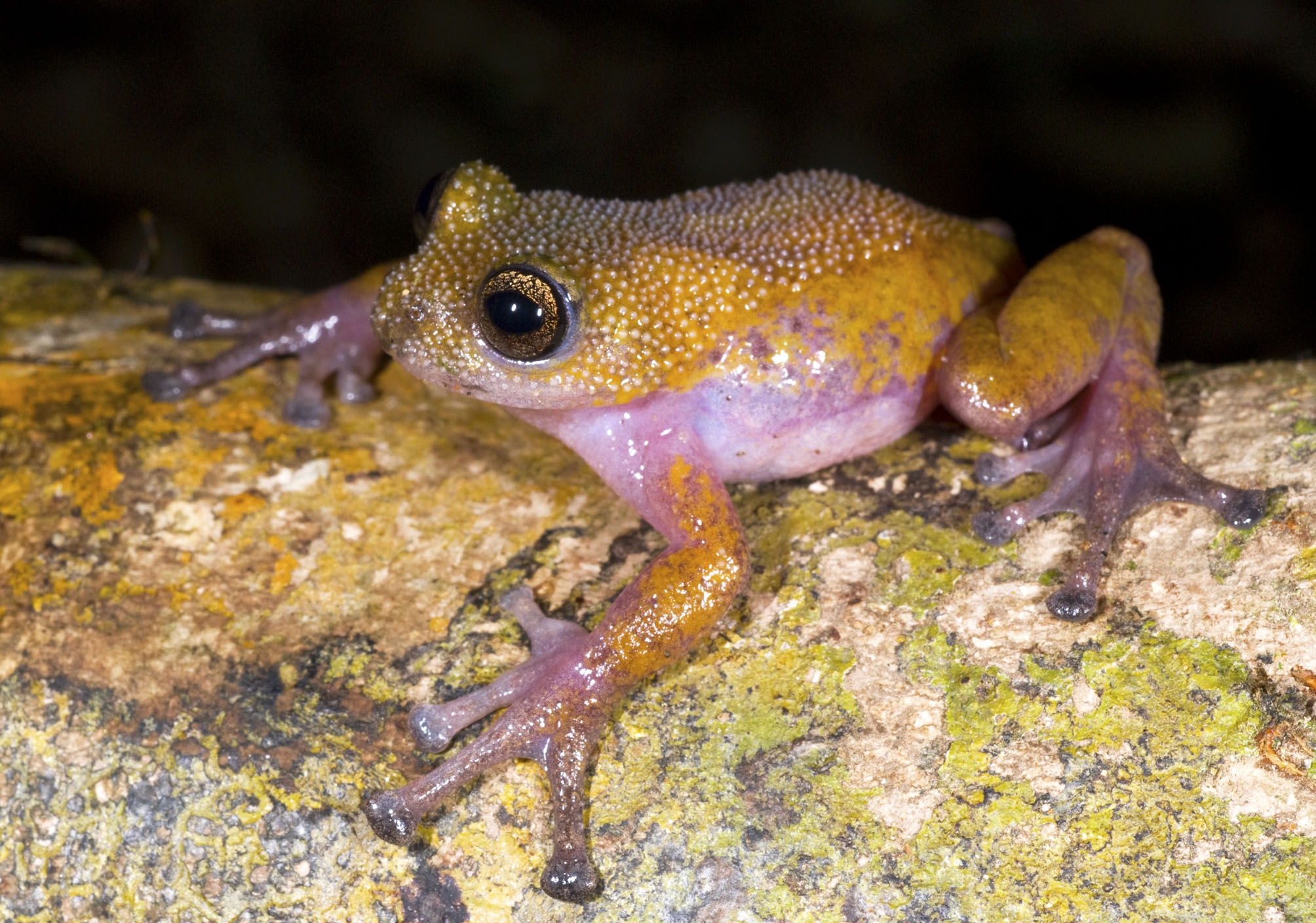| Citation |
IUCN SSC Amphibian Specialist Group 2015. Gracixalus lumarius. The IUCN Red List of Threatened Species 2015: e.T73726400A73726406. http://dx.doi.org/10.2305/IUCN.UK.2015-4.RLTS.T73726400A73726406.en. Downloaded on 07 May 2019 |
Description |
Geographic Range
NATIVE
Extant (resident)
Viet Nam
NUMBER OF LOCATIONS
1
UPPER ELEVATION LIMIT
2,160 metres
LOWER ELEVATION LIMIT
1,845 metres
Geographic Range in detail
ESTIMATED AREA OF OCCUPANCY (AOO) (KM²)
CONTINUING DECLINE IN AREA OF OCCUPANCY (AOO)
EXTREME FLUCTUATIONS IN AREA OF OCCUPANCY (AOO)
ESTIMATED EXTENT OF OCCURRENCE (EOO) (KM²)
425.6
CONTINUING DECLINE IN EXTENT OF OCCURRENCE (EOO)
EXTREME FLUCTUATIONS IN EXTENT OF OCCURRENCE (EOO)
CONTINUING DECLINE IN NUMBER OF LOCATIONS
EXTREME FLUCTUATIONS IN THE NUMBER OF LOCATIONS
RANGE DESCRIPTION
This species is known only from between 1,845-2,160 m asl within Ngoc Linh Nature Reserve, Dak Glei District, Kon Tum Province, Viet Nam (Rowley et al. 2014). This is an isolated area of high elevation and many fauna here are thought to be endemic (Abramov et al. 2006, Jenkins et al. 2007). The range of this species is not expected to extend outside of Mount Ngoc Linh and closely surrounding peaks (Rowley et al. 2014), but it is expected to occur in adjacent Quang Nam Province. The species is very restricted geographically, having an extent of occurrence (EOO) of 426 km2. Since all parts of its range are less than 40 km apart and could be wholly affected by single a threat event, the species is considered to occur in one threat-defined location.
Population
CURRENT POPULATION TREND
Decreasing
NUMBER OF MATURE INDIVIDUALS
POPULATION SEVERELY FRAGMENTED
CONTINUING DECLINE OF MATURE INDIVIDUALS
Population in detail
EXTREME FLUCTUATIONS
NO. OF SUBPOPULATIONS
CONTINUING DECLINE IN SUBPOPULATIONS
EXTREME FLUCTUATIONS IN SUBPOPULATIONS
ALL INDIVIDUALS IN ONE SUBPOPULATION
NO. OF INDIVIDUALS IN LARGEST SUBPOPULATION
DESCRIPTION
Very little is known about the size and trends of this species population except that the only individuals to have been recorded are the type-specimens (three adults males, one adult female and one juvenile), and one clutch of eggs (Rowley et al. 2014). The population is likely to be in decline due to habitat loss, however further surveys are needed to determine this and its relative abundance.
Habitat and Ecology
SYSTEM
Terrestrial
HABITAT TYPE
Forest
GENERATION LENGTH (YEARS)
CONGREGATORY
MOVEMENT PATTERNS
Not a Migrant
CONTINUING DECLINE IN AREA, EXTENT AND/OR QUALITY OF HABITAT
Yes
Habitat and Ecology in detail
HABITAT AND ECOLOGY
This arboreal species is associated with relatively undisturbed montane evergreen and bamboo forest. Habitat in less well-protected parts of its range is likely to be disturbed. The species appears to be strongly sexually dimorphic; based upon the individuals observed, males exhibit white conical tubercles on their dorsum, perhaps more obvious in the breeding season. The species is a phytotelm breeder, depositing around 130 small eggs on the walls of water-filled tree holes. The eggs probably hatch as free-swimming larvae (Rowley et al. 2014), though these have not yet been observed.
CLASSIFICATION SCHEME
Habitats Suitability Major importance
1. Forest 1.9. Forest - Subtropical/Tropical Moist Montane Suitable Yes
Threats
Agriculture & aquaculture
Annual & perennial non-timber crops
Energy production & mining
Mining & quarrying
Biological resource use
Hunting & trapping terrestrial animals
Threats in detail
THREATS
Habitat loss and degradation, particularly as a result of the conversion of forest to agricultural land to grow cash crop plantations (e.g. corn (T. Nguyen pers. comm. May 2015), rubber, coffee and tea), is an ongoing threat throughout the Central Highlands (Meyfroidt and Lambin 2008, Meyfroidt et al. 2013), particularly at elevations up to 1,700 m. Gold mining activity may also have an effect on the quality of forests in Quang Nam Province (T. Nguyen pers. comm. May 2015). This species is very likely to be threatened by habitat loss in localities that extend outside of well-protected areas (Rowley et al. 2014), which constitute over 50% of its estimated range. Due to its charismatic morphology and colouration, this species may be targeted by collectors for use in the international pet trade (J. Rowley pers. comm. March 2014).
CLASSIFICATION SCHEME
Threats Timing Stresses Scope Severity Impact score Invasive species Virus
2. Agriculture & aquaculture 2.1. Annual & perennial non-timber crops 2.1.3. Agro-industry farming Ongoing
1. Ecosystem stresses 1.1. Ecosystem conversion
1.2. Ecosystem degradation
2. Species Stresses 2.2. Species disturbance
2.3. Indirect species effects 2.3.7. Reduced reproductive success
Unknown Unknown Unknown
3. Energy production & mining 3.2. Mining & quarrying Ongoing
1. Ecosystem stresses 1.2. Ecosystem degradation
2. Species Stresses 2.2. Species disturbance
Unknown Unknown Unknown
5. Biological resource use 5.1. Hunting & trapping terrestrial animals 5.1.1. Intentional use (species is the target) Ongoing
2. Species Stresses 2.1. Species mortality
2.2. Species disturbance
2.3. Indirect species effects 2.3.6. Skewed sex ratios |

